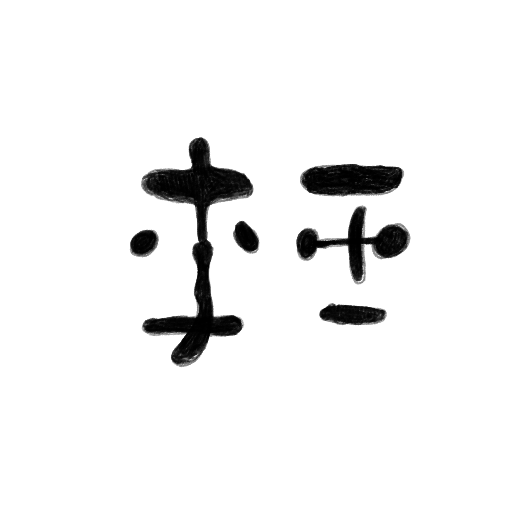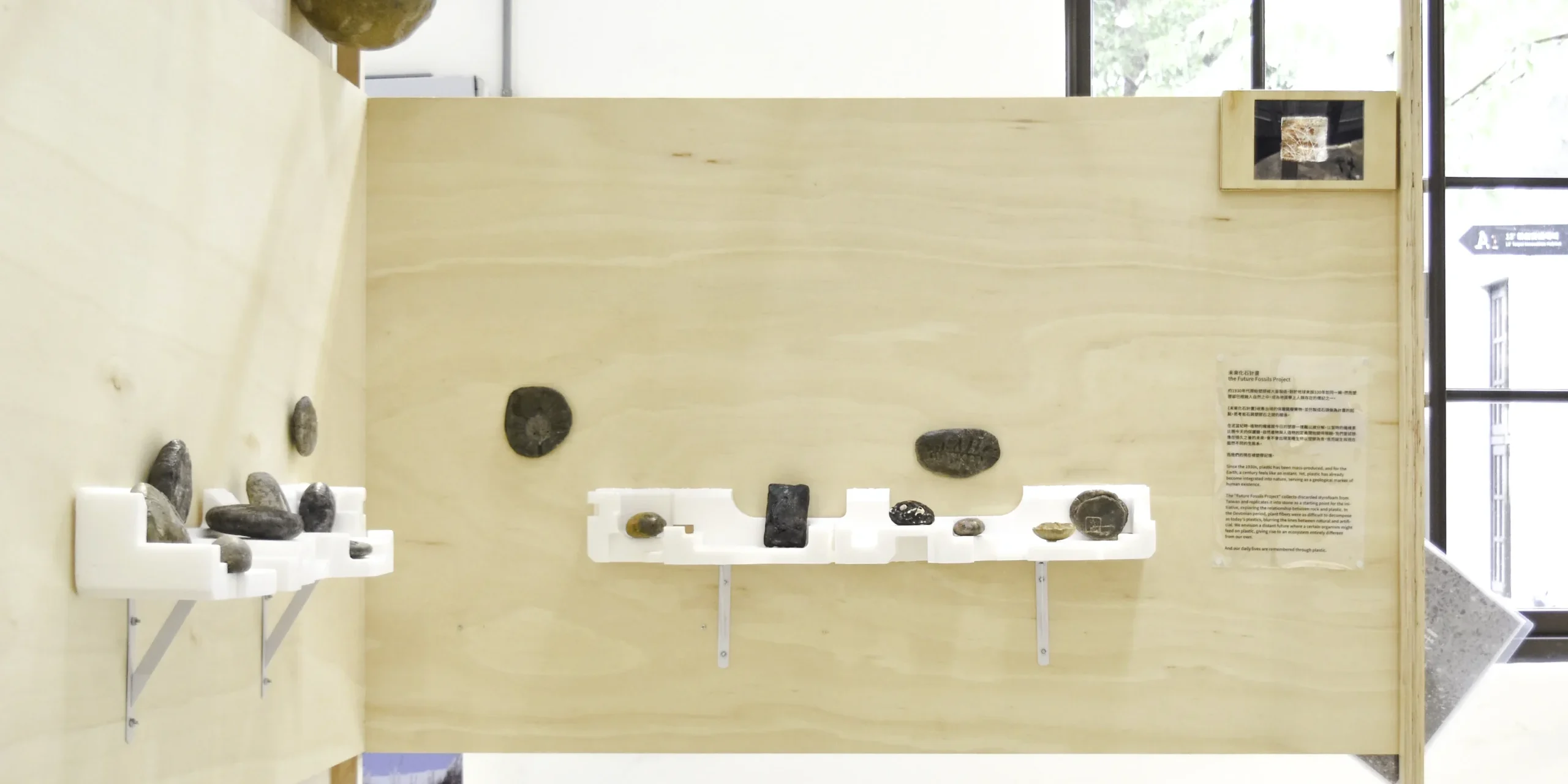約1930年代開始塑膠被大量製造,對於地球來說100年如同一瞬,然而塑膠卻已經融入自然之中,成為地質學上人類存在的標記之一。
《未來化石計畫》收集台灣的保麗龍廢棄物,並仿製成石頭做為計畫的起點,思考岩石與塑膠石之間的關係。
在泥盆紀時,植物的纖維跟今日的塑膠一樣難以被分解,以當時的纖維素比照今天的保麗龍,自然產物與人造物的定義開始變得模糊。我們嘗試想像在很久之後的未來,會不會出現某種生物以塑膠為食,進而誕生與現在截然不同的生態系,而我們的現在被塑膠記憶。
我們以這件作品試圖轉化保麗龍作為人工產物的形象,嘗試以脫離人類中心主義的角度想像未來的世界。
Since the 1930s, plastic has been mass-produced and has integrated into nature, becoming a geological marker of human existence.
The “Future Fossils Project” collects discarded polystyrene waste from Taiwan and reproduces it into stone, exploring the relationship between rock and plastic. Plant fibers in the Devonian period, like today’s plastics, were difficult to decompose, blurring the lines between natural and artificial. We imagine a future where organisms might feed on plastic, creating a new ecosystem.
This work attempts to transform the image of polystyrene, envisioning the future from a non-human-centered perspective.



